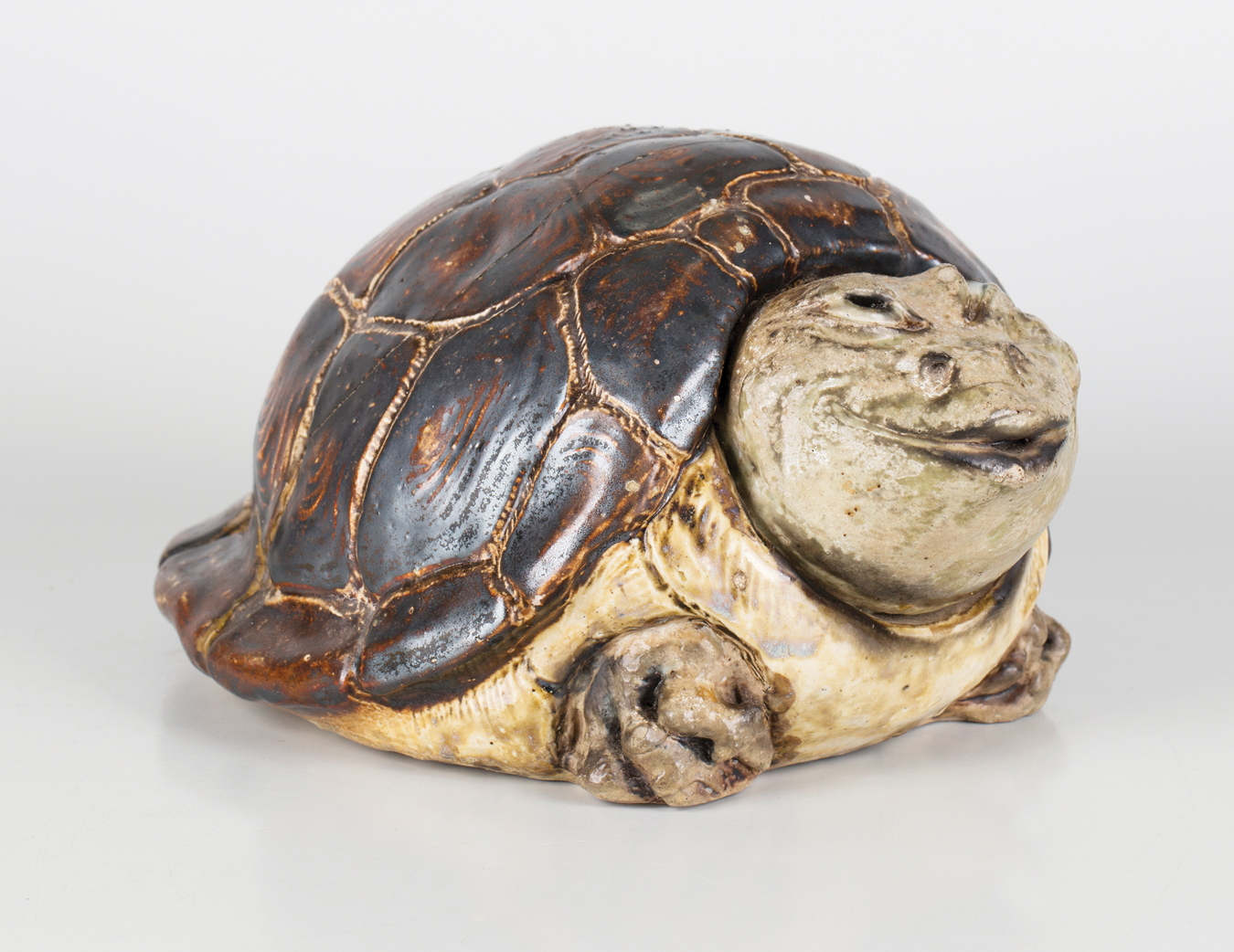
Tortoises have always had a special place in my heart so imagine my excitement when I discovered an earthenware tortoise by the important Victorian Art Potters Martin Brothers whilst on a routine valuation in Cranleigh just a few weeks ago.
One of my earliest memories of tortoises is from visiting my Great-Grandpa Edwin and his second wife Aunty Millie as a young boy. It was always rather a formal visit so my brother and I would escape into Aunty Millie’s beautiful and extensive gardens as soon as we could and hide in the herbaceous borders. We would lie down hidden from view and watch the clouds pass overhead whilst we ate wild strawberries. Aunty Millie had large, old tortoises and as we lay there we could hear them munching their way noisily towards us.
In the sitting room of this Cranleigh cottage my eye was caught by the earthenware tortoise sitting nonchalantly beside a brick fireplace on the tile hearth between the coal bucket and grate. As I made my way excitedly towards it the family, surprised at my interest, recounted how their mother had rescued it from the garden decades before.
Robert Wallace Martin started by setting up a studio for the production of salt-glazed stoneware in Fulham in 1873, moving to larger premises at Norwood Green, Southall in 1877. He worked with his brothers Charles, Walter and Edwin.
The prevailing style at the time was Gothic Revival and they produced objects with an almost medieval vitality. The brothers worked in close collaboration predominately using salt glazes with a subdued palette. Their handmade work stood against the tide of the Victorian Industrial Age giving expression to the aspirations of the Arts and Crafts Movement. Like the work of the famous contemporary designer Christopher Dresser their designs were often anthropomorphic, zoomorphic and naturalistic. The atmosphere of connoisseurship which they engendered at their Brown Street shop in Holborn was celebrated by patrons and critics alike. The brothers certainly considered themselves as artists and took part in what has been described as the ‘eclecticism of the late Victorian period’.
Their work found favour and was collected by the Pre-Raphaelite painters Edward Burne-Jones and Dante Gabriel Rossetti. Queen Mary ordered sixty pieces of Martinware to be exhibited at the Paris Exposition of 1914.
Robert Wallace Martin had worked for the architectural sculptor J B Phillips and attended the Lambeth School of Art in his formative years. In 1879/1880 he began to model their grotesque creatures. Often the faces of these creatures, especially their hugely sought after ‘Wally Birds’, were caricatures of contemporary political and establishment figures.
Since the 1920s Martinware has always attracted strong interest from collectors at auction. The rather marvellous Martin Brothers tortoise you see here dates from March 1904. Its face has a human quality and a mischievous grin, the eyes follow the viewer. Its shell is beautifully conceived, modelled and glazed. The poor thing has some wear, signs of its life in the garden and beside the fire, but it is a rare and large example measuring almost 10 inches in length.
This fine Martin Brothers tortoise has emerged from decades of hibernation to the delight and excitement of collectors and will be auctioned at Toovey’s on 13th August – I can’t wait to see what he makes!